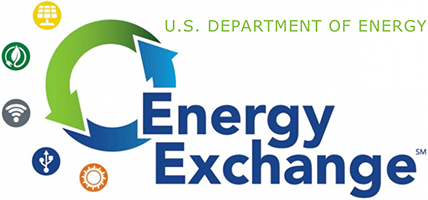Pittsburg, PA

To meet the Biden Administration's goal for a net-zero emissions building portfolio and the requirements in the Federal Building Performance Standard, federal agencies will need to reduce greenhouse gas emissions across their facilities. But do all solutions address all emissions equally? This session will explore different solutions for each emission type (Scope 1, Scope 2, and Scope 3). These include technology options and procurement strategies already in use today. This content in this session complements Track 4 Session 2 "Net Zero Energy Emissions Fundamentals."
Instructors
Mazen Daher, Advanced Buildings and Communities Research Engineer
Instructor Organization: Electric Power Research Institute Read Bio
Mazen Daher is a Research Engineer within the Advanced Buildings and Communities Program at the Electric Power Research Institute, based in Palo Alto, California. He leads the program's work on building performance standards and develops measurement and verification solutions for demonstration projects researching zero net energy communities, equitable decarbonization pathways, and electrification cost-effectiveness. As part of his work at EPRI, he has been a participant in multiple research initiatives, including the Department of Energy's Connected Communities program, and the deployment and commissioning of the first Zero Net Energy manufactured home in California. Previously, Mazen was a research and development engineer at the University of California, Davis, where he modeled the environmental, societal, and financial benefits of novel energy conservation and electrification measures. He holds a master's degree in mechanical and aerospace engineering from the University of California, Davis.
Michael Myers, Sustainable Buildings Advisor, Nuclear Security Administration, Department of Energy Read Bio
Mr. Myers has been a leader in energy efficiency, green building, and sustainability for over 4 decades. Mr. Myers currently serves as a Sustainable Buildings Advisor for the National Nuclear Security Administration. He previously provided technical support to the Federal Energy Management Program to assist Agencies comply with the Guiding Principles for Sustainable Federal Buildings. He has worked for U.S. Department of Energy, Lockheed Martin, the cities of Austin, San Antonio, and New York. He led the team that created the first green building program in the nation, the City of Austin's Green Building Program, which received honors at the U.N. Earth Summit. In 2019, Mike received the first USGBC-TX Green Building Pioneer award. Mr. Myers is a USGBC LEED AP, and has served on the Vision Zero-ATX Board and was a Governor Appointee on the Texas Weatherization Policy Advisory Council. Mr. Myers currently resides in New Mexico.
Diana Henderson, Sustainability Program Manager, General Services Administration Read Bio
Diana Burgos Henderson is a Sustainability Program Specialist with the Facility Management Division in GSA's MidAtlantic Region. She works with several teams to reduce greenhouse gas emissions, conserve energy, and reduce the embodied carbon impacts of purchased materials. Diana earned BOMI certifications for High Performance Sustainable Buildings, Real Property Administrator, and Facilities Management Administrator, with degrees in Business Administration and Psychology. In addition to 12 years with GSA, where she worked in property management for 10 years in the GSA field office of Richmond, Virginia, Diana proudly served in the U.S. Marine Corps.
Learning Objectives
Upon completion of this course, attendees will be able to:
- Recognize the components of the Federal Building Performance Standard;
- Identify how to leverage recommissioning to reduce greenhouse gas emissions in facilities;
- dentify how to use low-carbon construction material standards;
- Identify how to use an environmental product declaration.









